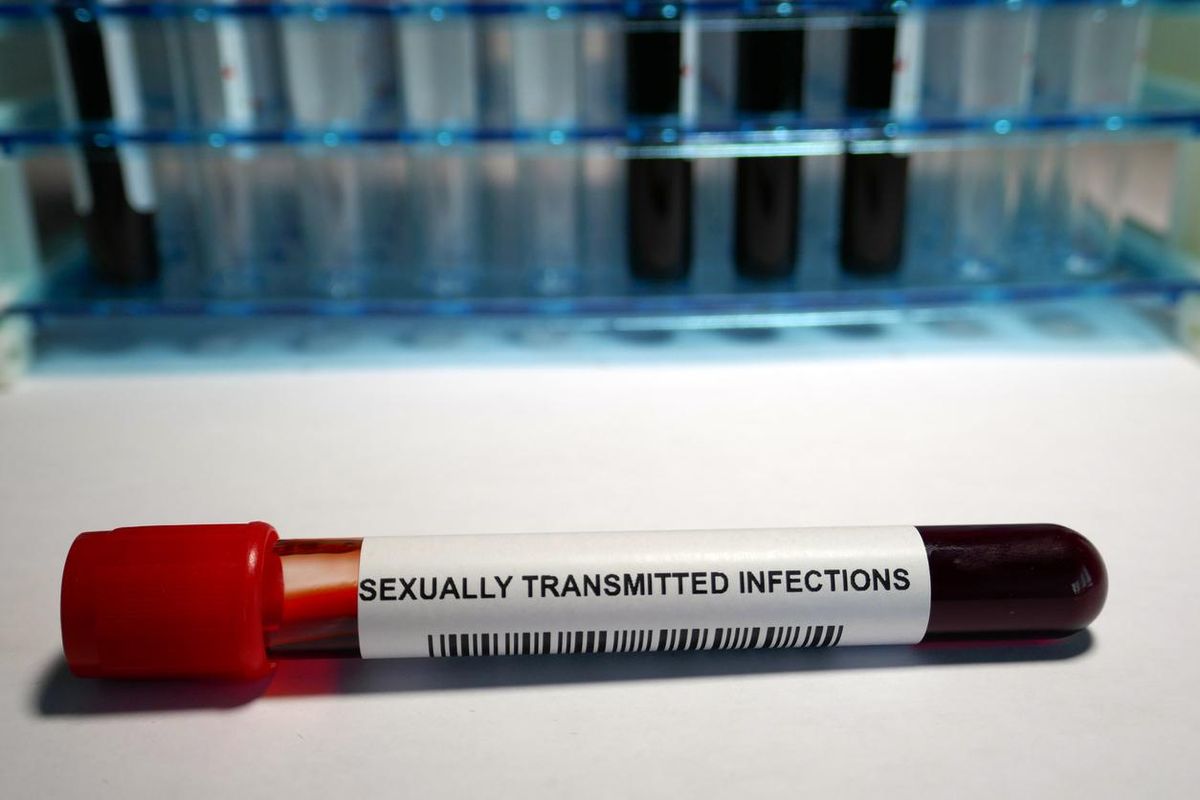At-home medical testing gives you information about your health, right at your fingertips, without the need to ever set foot into a doctor’s office. One of the latest developments in this trend is at-home testing for sexually transmitted infections (STIs), which are bacterial, viral or parasitic infections that can be passed on through sexual contact.
Traditionally, STI testing involves seeing a doctor in person. There, they can often take samples like urine or vaginal fluids and send them for testing. But, despite the fact that STIs are exceedingly common — 2.4 million STI cases were reported in the United States in 2020 alone — there’s still stigma attached. For some, privacy may be part of the appeal of at-home testing. “It’s more discreet, and it’s off the record,” said Dr. Robyn Faye, board-certified OB-GYN and member of HealthyWomen’s Women’s Health Advisory Council.
In addition, Covid-19-related backlogs and dwindling healthcare provider (HCP) numbers have made it more difficult to see an HCP in person. So it’s not surprising that at-home testing for STIs has increased significantly during the pandemic.
STI rates in the United States
While teens and young adults have the highest STI rates in the United States, anyone who engages in sexual contact can get an STI. In fact, aging can increase your risk for STIs because vaginal thinning, which is common with menopause, can cause microtearing that can make it easier for bacteria and viruses to enter your bloodstream.
Findings also show STI rates are higher in women compared to men, and women are more likely to experience serious health issues from STIs, including infertility, chronic pain and pregnancy complications.
Additionally, Black and Hispanic people have higher STI rates than white people, even though they represent only 12% of the U.S. population. The CDC explains that this difference is likely the result of a lack of access to sexual healthcare.
Easy access to testing comes with a few downsides
When you order STI test kits online, they’ll ship right to your front door in discreet packaging, providing you with everything you need to collect samples on your own. After collecting samples, you’ll send them over to the brand’s affiliated lab. It’s a simple, no-fuss process.
In addition to convenience and privacy, another benefit of at-home STI testing is that it helps improve access to testing for infections like gonorrhea, chlamydia, trichomoniasis, herpes, syphilis and HIV for those living in communities with limited healthcare services.
But there are some caveats. For example, while at-home testing is fairly accurate, there’s always room for error as a result of self-collection, Faye said.
At-home testing also comes with a few other drawbacks, such as:
- Not knowing when you should get tested. Testing right after suspected exposure, for example, won’t always net you an accurate result. Faye also pointed out that many people with STIs are often asymptomatic, making regular screening essential.
- Not knowing what to test for. “[People] come into the office and say they have a yeast infection when they have trichomoniasis, and they have other things wrong with them,” Faye said. Unless you’re paying for an STI panel, which includes testing for multiple infections — and costs more — you might test for the wrong thing.
- No treatment. While some at-home testing brands offer medication with a positive result, it’s not a universal perk. If you receive a positive result and the at-home testing service doesn’t provide any follow-up or prescription, it’s important to see an HCP.
- Difficulty interpreting results. HCPs are equipped to correctly interpret your STI testing results, something not everyone may do properly. Though some online test brands will connect you with a medical professional if you’ve tested positive, not all will.
- Cost. While pricing for single testing may be more affordable, comprehensive STI panels can sometimes cost upwards of $400 without insurance. So while at-home testing may be more convenient and easy to access physically speaking, it’s cost-prohibitive for many people.
Comprehensive healthcare and improved access: A balancing act
Anyone who is symptomatic should see a medical professional and avoid using at-home tests, Faye urged. But if you’re interested in at-home tests for asymptomatic testing, opt for brands affiliated with CLIA-certified labs that also offer physician follow-up.
While at-home tests are great for people who don’t have easy access to a healthcare provider or who may feel uncomfortable talking about sex, there may be a missing element of patient-doctor interaction, Faye noted.
In-person appointments also allow HCPS to talk to people about safe sex, answer questions that crop up randomly and schedule follow-up testing. HCPs may also gently ask people about their lives and partners, leaving the door open for people to report instances of domestic or sexual abuse. Without this in-person interaction, some people may fall through the cracks, Faye suggested.
But at-home STI testing does have its place. For busy, well-informed people who want to take charge of their sexual health and know to follow up with their HCP if they’re positive, at-home testing can be a convenient and reliable way to screen for STIs.







